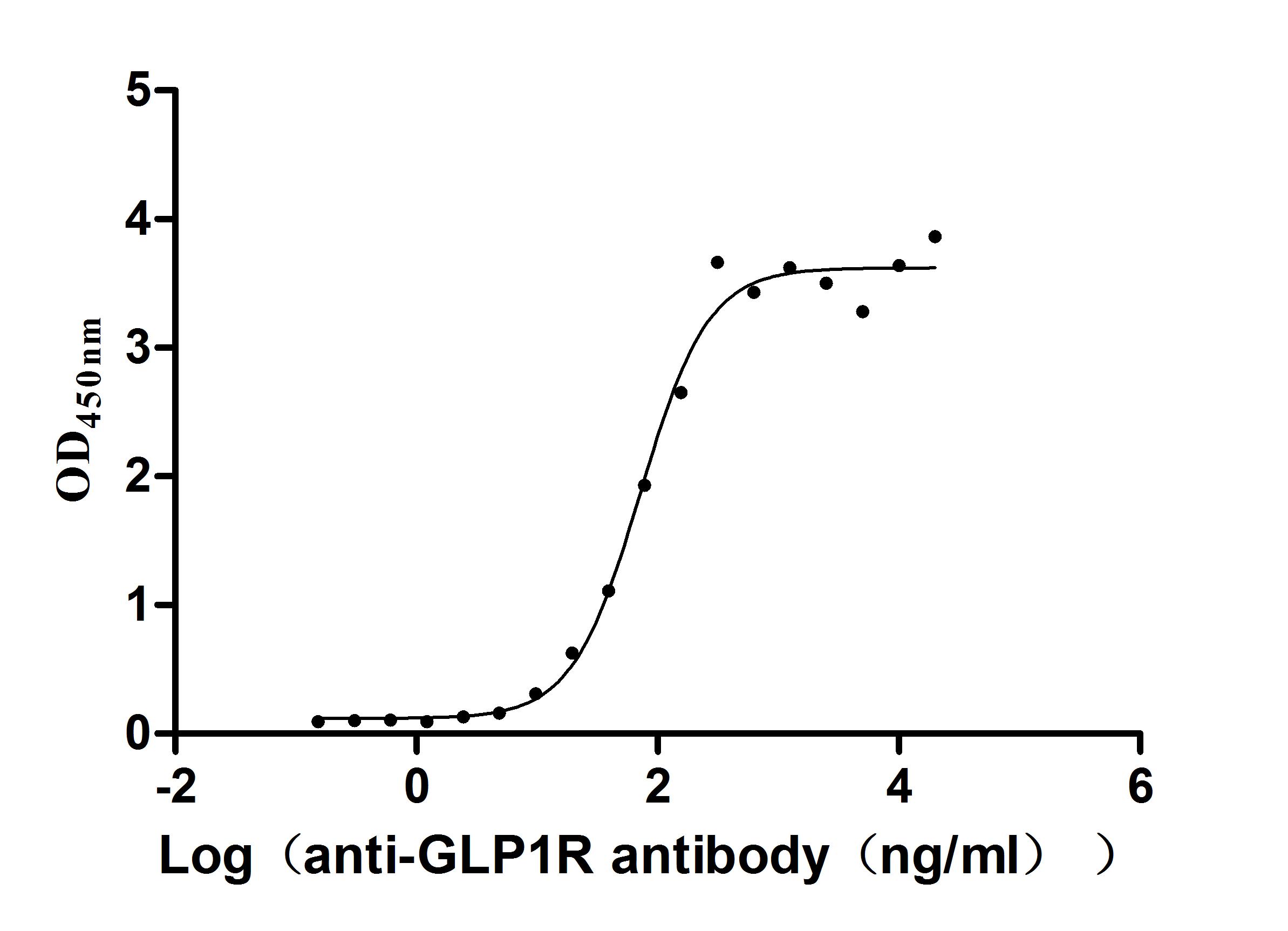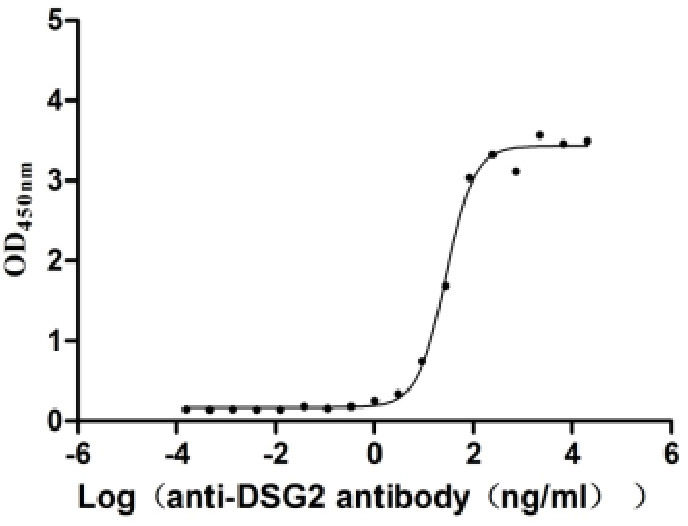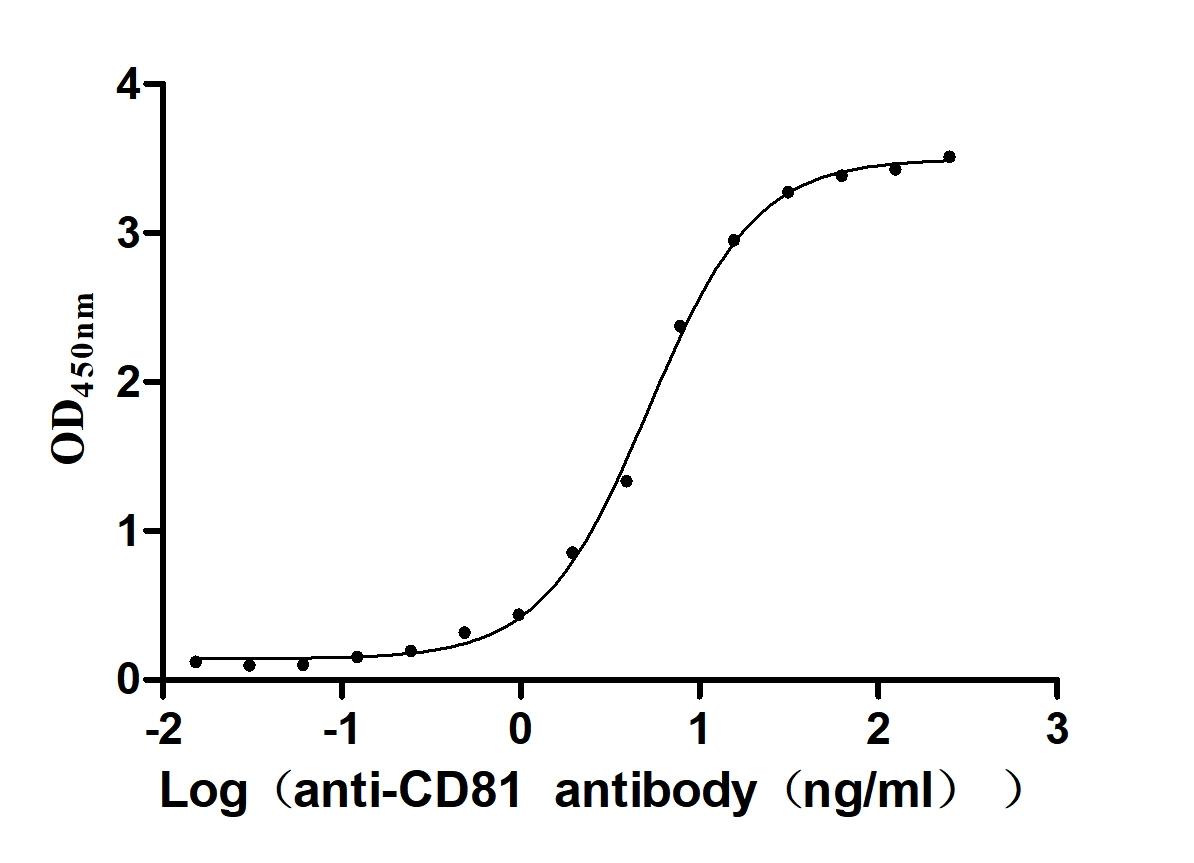Recombinant Rat NAD-dependent protein deacetylase sirtuin-2 (Sirt2)
-
中文名稱:大鼠Sirt2重組蛋白
-
貨號:CSB-YP713049RA
-
規(guī)格:
-
來源:Yeast
-
其他:
-
中文名稱:大鼠Sirt2重組蛋白
-
貨號:CSB-EP713049RA
-
規(guī)格:
-
來源:E.coli
-
其他:
-
中文名稱:大鼠Sirt2重組蛋白
-
貨號:CSB-EP713049RA-B
-
規(guī)格:
-
來源:E.coli
-
共軛:Avi-tag Biotinylated
E. coli biotin ligase (BirA) is highly specific in covalently attaching biotin to the 15 amino acid AviTag peptide. This recombinant protein was biotinylated in vivo by AviTag-BirA technology, which method is BriA catalyzes amide linkage between the biotin and the specific lysine of the AviTag.
-
其他:
-
中文名稱:大鼠Sirt2重組蛋白
-
貨號:CSB-BP713049RA
-
規(guī)格:
-
來源:Baculovirus
-
其他:
-
中文名稱:大鼠Sirt2重組蛋白
-
貨號:CSB-MP713049RA
-
規(guī)格:
-
來源:Mammalian cell
-
其他:
產(chǎn)品詳情
-
純度:>85% (SDS-PAGE)
-
基因名:Sirt2
-
Uniprot No.:
-
別名:Sirt2; Sir2l2; NAD-dependent protein deacetylase sirtuin-2; EC 2.3.1.286; Regulatory protein SIR2 homolog 2; SIR2-like protein 2
-
種屬:Rattus norvegicus (Rat)
-
蛋白長度:full length protein
-
表達區(qū)域:1-350
-
氨基酸序列MDFLRNLFTQ TLGLGSQKER LLDELTLEGV TRYMQSERCR RVICLVGAGI STSAGIPDFR SPSTGLYANL EKYHLPYPEA IFEISYFKKH PEPFFALAKE LYPGQFKPTI CHYFIRLLKE KGLLLRCYTQ NIDTLERVAG LEPQDLVEAH GTFYTSHCVN TSCGKEYTMS WMKEKIFSEA TPKCEKCQNV VKPDIVFFGE NLPPRFFSCM QSDFSKVDLL IIMGTSLQVQ PFASLISKAP LATPRLLINK EKTGQTDPFL GMMMGLGGGM DFDSKKAYRD VAWLGDCDQG CLALADLLGW KELEDLVRRE HANIDAQSGS QASNPSATVS PRKSPPPAKE AARTKEKEEH
-
蛋白標簽:Tag?type?will?be?determined?during?the?manufacturing?process.
The tag type will be determined during production process. If you have specified tag type, please tell us and we will develop the specified tag preferentially. -
產(chǎn)品提供形式:Lyophilized powder
Note: We will preferentially ship the format that we have in stock, however, if you have any special requirement for the format, please remark your requirement when placing the order, we will prepare according to your demand. -
復(fù)溶:We recommend that this vial be briefly centrifuged prior to opening to bring the contents to the bottom. Please reconstitute protein in deionized sterile water to a concentration of 0.1-1.0 mg/mL.We recommend to add 5-50% of glycerol (final concentration) and aliquot for long-term storage at -20℃/-80℃. Our default final concentration of glycerol is 50%. Customers could use it as reference.
-
儲存條件:Store at -20°C/-80°C upon receipt, aliquoting is necessary for mutiple use. Avoid repeated freeze-thaw cycles.
-
保質(zhì)期:The shelf life is related to many factors, storage state, buffer ingredients, storage temperature and the stability of the protein itself.
Generally, the shelf life of liquid form is 6 months at -20°C/-80°C. The shelf life of lyophilized form is 12 months at -20°C/-80°C. -
貨期:Delivery time may differ from different purchasing way or location, please kindly consult your local distributors for specific delivery time.Note: All of our proteins are default shipped with normal blue ice packs, if you request to ship with dry ice, please communicate with us in advance and extra fees will be charged.
-
注意事項:Repeated freezing and thawing is not recommended. Store working aliquots at 4°C for up to one week.
-
Datasheet :Please contact us to get it.
靶點詳情
-
功能:NAD-dependent protein deacetylase, which deacetylates internal lysines on histone and alpha-tubulin as well as many other proteins such as key transcription factors. Participates in the modulation of multiple and diverse biological processes such as cell cycle control, genomic integrity, microtubule dynamics, cell differentiation, metabolic networks, and autophagy. Plays a major role in the control of cell cycle progression and genomic stability. Functions in the antephase checkpoint preventing precocious mitotic entry in response to microtubule stress agents, and hence allowing proper inheritance of chromosomes. Positively regulates the anaphase promoting complex/cyclosome (APC/C) ubiquitin ligase complex activity by deacetylating CDC20 and FZR1, then allowing progression through mitosis. Associates both with chromatin at transcriptional start sites (TSSs) and enhancers of active genes. Plays a role in cell cycle and chromatin compaction through epigenetic modulation of the regulation of histone H4 'Lys-20' methylation (H4K20me1) during early mitosis. Specifically deacetylates histone H4 at 'Lys-16' (H4K16ac) between the G2/M transition and metaphase enabling H4K20me1 deposition by KMT5A leading to ulterior levels of H4K20me2 and H4K20me3 deposition throughout cell cycle, and mitotic S-phase progression. Deacetylates KMT5A modulating KMT5A chromatin localization during the mitotic stress response. Deacetylates also histone H3 at 'Lys-57' (H3K56ac) during the mitotic G2/M transition. During oocyte meiosis progression, may deacetylate histone H4 at 'Lys-16' (H4K16ac) and alpha-tubulin, regulating spindle assembly and chromosome alignment by influencing microtubule dynamics and kinetochore function. Deacetylates histone H4 at 'Lys-16' (H4K16ac) at the VEGFA promoter and thereby contributes to regulate expression of VEGFA, a key regulator of angiogenesis. Deacetylates alpha-tubulin at 'Lys-40' and hence controls neuronal motility, oligodendroglial cell arbor projection processes and proliferation of non-neuronal cells. Phosphorylation at Ser-368 by a G1/S-specific cyclin E-CDK2 complex inactivates SIRT2-mediated alpha-tubulin deacetylation, negatively regulating cell adhesion, cell migration and neurite outgrowth during neuronal differentiation. Deacetylates PARD3 and participates in the regulation of Schwann cell peripheral myelination formation during early postnatal development and during postinjury remyelination. Involved in several cellular metabolic pathways. Plays a role in the regulation of blood glucose homeostasis by deacetylating and stabilizing phosphoenolpyruvate carboxykinase PCK1 activity in response to low nutrient availability. Acts as a key regulator in the pentose phosphate pathway (PPP) by deacetylating and activating the glucose-6-phosphate G6PD enzyme, and therefore, stimulates the production of cytosolic NADPH to counteract oxidative damage. Maintains energy homeostasis in response to nutrient deprivation as well as energy expenditure by inhibiting adipogenesis and promoting lipolysis. Attenuates adipocyte differentiation by deacetylating and promoting FOXO1 interaction to PPARG and subsequent repression of PPARG-dependent transcriptional activity. Plays a role in the regulation of lysosome-mediated degradation of protein aggregates by autophagy in neuronal cells. Deacetylates FOXO1 in response to oxidative stress or serum deprivation, thereby negatively regulating FOXO1-mediated autophagy. Deacetylates a broad range of transcription factors and co-regulators regulating target gene expression. Deacetylates transcriptional factor FOXO3 stimulating the ubiquitin ligase SCF(SKP2)-mediated FOXO3 ubiquitination and degradation. Deacetylates HIF1A and therefore promotes HIF1A degradation and inhibition of HIF1A transcriptional activity in tumor cells in response to hypoxia. Deacetylates RELA in the cytoplasm inhibiting NF-kappaB-dependent transcription activation upon TNF-alpha stimulation. Inhibits transcriptional activation by deacetylating p53/TP53 and EP300. Deacetylates also EIF5A. Functions as a negative regulator on oxidative stress-tolerance in response to anoxia-reoxygenation conditions. Plays a role as tumor suppressor.
-
基因功能參考文獻:
- the potential role of SIRT2 in regulating neuropathic pain associated with inhibition of NF-kappaB signaling and neuroinflammation PMID: 29222643
- Melatonin and curcumin significantly decreased malondialdehyde (MDA) and SIRT2 expression in the hippocampus. There was a significant correlation between SIRT2 and MDA levels. Results suggest that melatonin may increase cell survival in the hippocampus via decreasing oxidative stress and SIRT2 expression and increasing Bcl-2 expression. PMID: 29325994
- AGEs/AGEs receptor promote microtubule stabilization via the suppression of the SIRT2/acetylated alpha-tubulin signaling pathway in diabetic cardiomyopathy. PMID: 26209361
- Our study helps to elucidate the mechanism for the participation of aging in Parkinson's disease (PD) and suggests that substantia nigra SIRT2 may be involved in PD neurodegeneration PMID: 26089639
- hippocampal SIRT2 is involved in the modulation of depressant-like behaviors, possibly by regulating neurogenesis. PMID: 25672834
- Expression of endoplasmic reticulum stress associated CTRC mutants reduces the levels of acetylated tubulin by increasing both the levels and phosphorylation of the deacetylase SIRT2. PMID: 26022124
- Selective SIRT2 availability to oligodendroglia may have important implications for myelinogenesis, myelin-axon interaction, and brain aging. PMID: 17344398
顯示更多
收起更多
-
亞細胞定位:Nucleus. Cytoplasm, perinuclear region. Cytoplasm. Cytoplasm, cytoskeleton. Cytoplasm, cytoskeleton, microtubule organizing center, centrosome. Cytoplasm, cytoskeleton, microtubule organizing center, centrosome, centriole. Cytoplasm, cytoskeleton, spindle. Midbody. Chromosome. Perikaryon. Cell projection. Cell projection, growth cone. Myelin membrane.
-
蛋白家族:Sirtuin family, Class I subfamily
-
組織特異性:Expressed in the cerebellum, cerebral cortex and cervival spinal cord. Expressed in Purkinje cells, oligodendrocytes and Schwann cells (at protein level). Expressed in the central nervous system (CNS).
-
數(shù)據(jù)庫鏈接:
Most popular with customers
-
Recombinant Human Cytokine receptor common subunit beta (CSF2RB), partial (Active)
Express system: Mammalian cell
Species: Homo sapiens (Human)
-
Recombinant Mouse Claudin-18.2 (Cldn18.2)-VLPs (Active)
Express system: Mammalian cell
Species: Mus musculus (Mouse)
-
Recombinant Human Claudin-4 (CLDN4)-VLPs (Active)
Express system: Mammalian cell
Species: Homo sapiens (Human)
-
Express system: Mammalian cell
Species: Homo sapiens (Human)
-
Recombinant Human Claudin-6 (CLDN6)-VLPs, Fluorescent (Active)
Express system: Mammalian cell
Species: Homo sapiens (Human)
-
Recombinant Human Glucagon-like peptide 1 receptor (GLP1R), partial (Active)
Express system: Mammalian cell
Species: Homo sapiens (Human)
-
Recombinant Human Desmoglein-2 (DSG2), partial (Active)
Express system: Mammalian cell
Species: Homo sapiens (Human)
-
Recombinant Human CD81 antigen (CD81), partial (Active)
Express system: Mammalian cell
Species: Homo sapiens (Human)


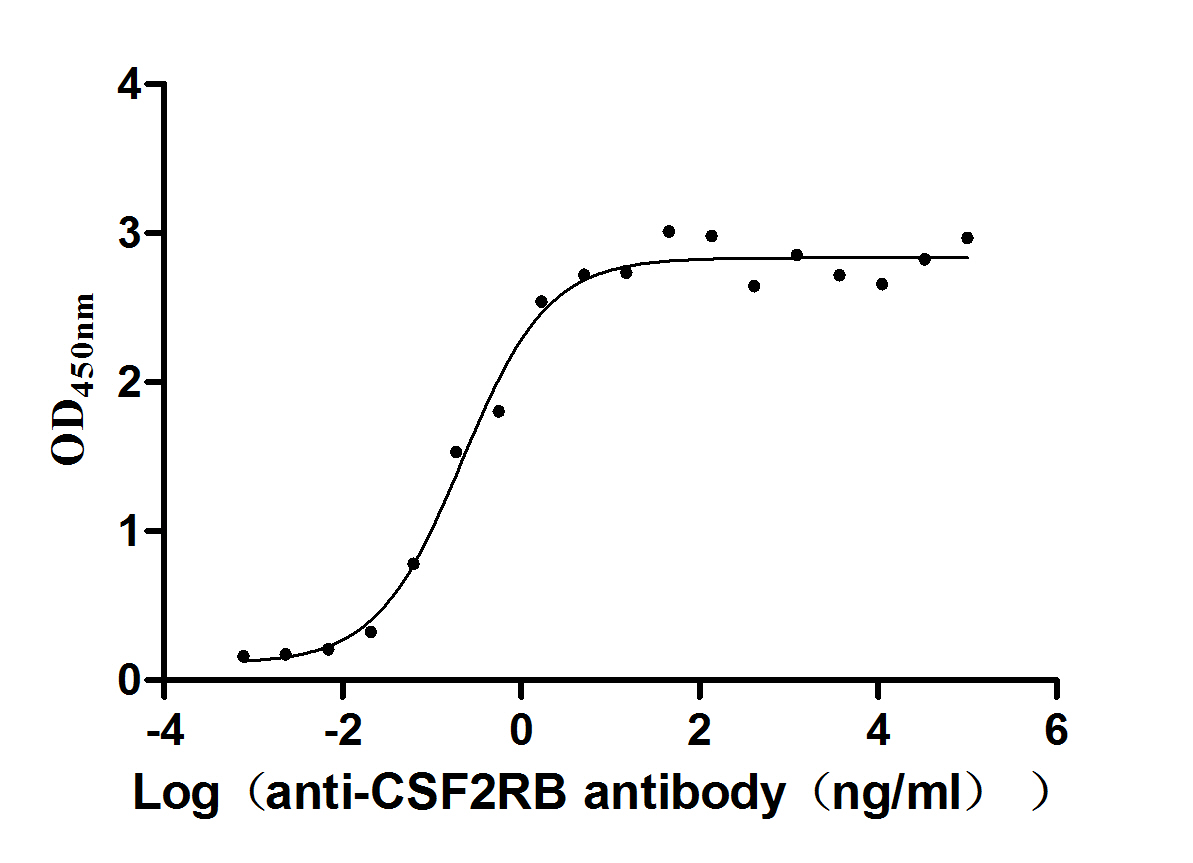
-AC1.jpg)
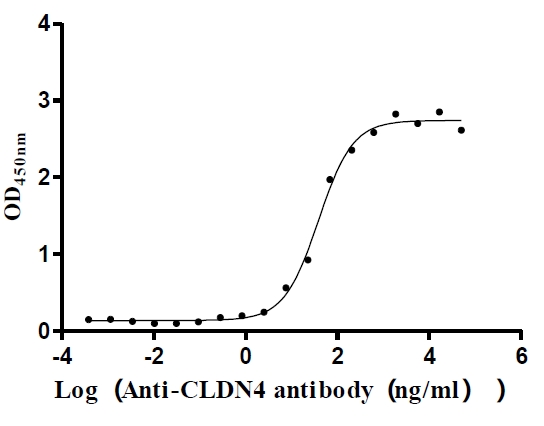

f4-AC1.jpg)
